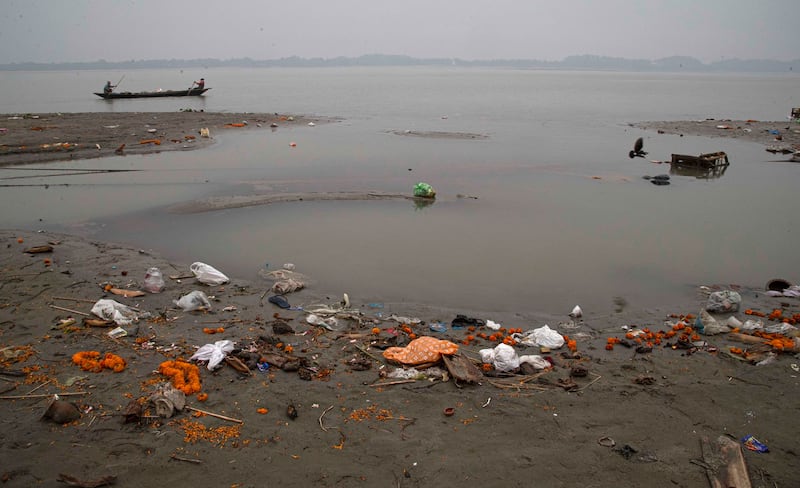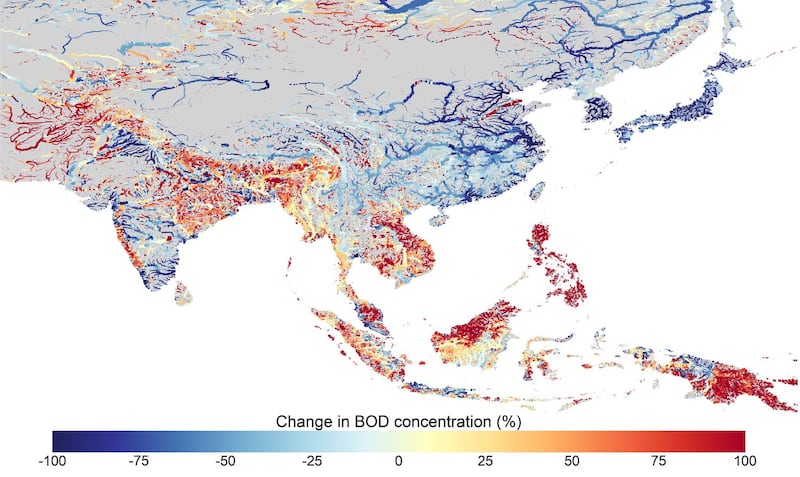More than half of the world’s population could be affected by surface water pollution by 2100, a new study said.
A team of international researchers found that poor surface water quality could affect 5.5 billion people by 2100, and people living in developing countries would be disproportionately affected, said the study published in the Nature Water journal on Tuesday.
Surface water pollution refers to the contamination of water bodies, such as rivers, lakes, and oceans, by harmful substances and pollutants from human activities or natural sources.
Climate change and socio-economic development (changes in population, land use, economic growth) are expected to affect water in the coming decades, said the study, which looked into their impacts on water temperature and salinity, organic and pathogen pollution.
The researchers found that Sub-Saharan Africa is likely to become a global hotspot of surface water pollution by the end of the century, irrespective of future climate and socio-economic scenarios.
“This occurs due to a combination of surface water quality deterioration and demographic changes (e.g., population growth),” the main co-author of the study, Edward Jones from Utrecht University in the Netherlands, told RFA.
According to the study, the number of people exposed to pollutant concentrations could more than double under the most optimistic future scenario and rise up to five times under pessimistic assumptions.

Jones said the East Asia and the Pacific region has historically been the dominant hotspot for surface water pollution.
“Our model results for the future (e.g., 2081-2100) suggest substantial improvements to surface water quality in the East Asia & Pacific region under all three scenarios,” he added.
Such scenarios range from a world characterized by sustainability and equality to resurging nationalism and widening inequality to strong but fossil-fueled economic development.
In the scenario of resurging nationalism and widening inequality, the influence of climate change and social development on surface water quality in the Asia-Pacific region has a greater impact on specific observed changes, with strong degradation seen in the Philippines, parts of Indonesia and Vietnam.
Jones said Southern Asia, like India, could see strong water quality deterioration under such specific climate change and socio-economic impact scenarios.

The study is based on high-resolution global modeling of surface water quality to simulate water temperature, indicators of salinity, and organic and pathogen pollution between 2005 and 2100.
It said the proportion of the world’s population exposed to salinity, organic and pathogen pollution by the end of the century ranges between 17-27%, 20-37% and 22-44%, respectively.
According to the United Nations, the world population is projected to reach 10.4 billion by 2100.
Currently, more than a quarter of the world’s population relies on unsafe drinking water, according to UNESCO, with around 80% of people living under water stress in Asia; in particular, northeast China, as well as India and Pakistan.
UNICEF says more than 800,000 people die from diseases directly attributable to unsafe water, inadequate sanitation and poor hygiene practices.
According to Tuesday’s research, water quality can be influenced by pollutants from various water use sectors, including domestic, manufacturing, livestock, and irrigation activities. However, there is a lack of global consistency in the management practices necessary to mitigate these effects.
The findings highlight the need for measures to protect surface water resources and safeguard the well-being of communities, the researchers said.
They added that waterborne illnesses resulting from water contaminated with pathogens can present a considerable threat to human populations.
Edited by Mike Firn.
